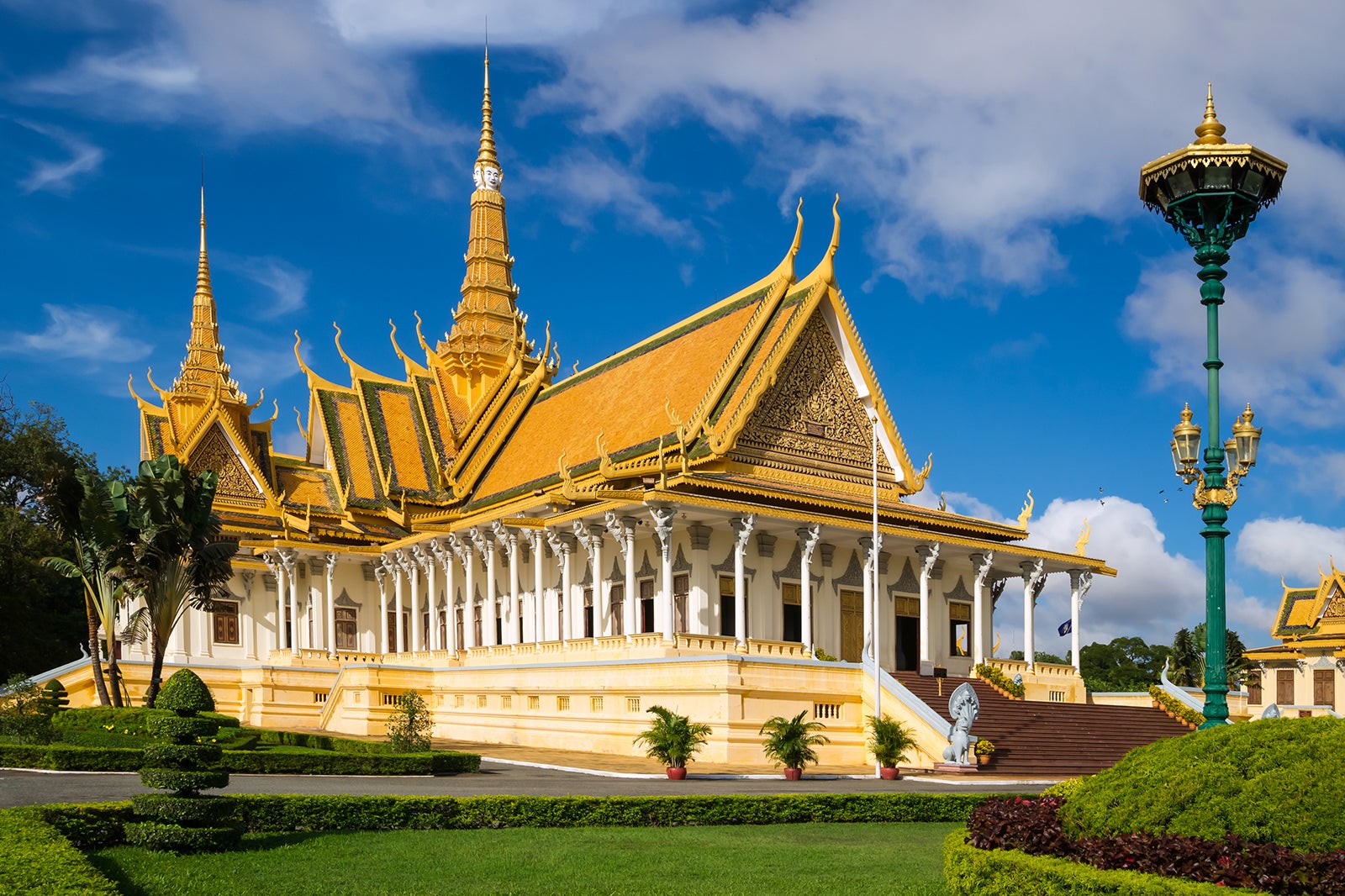politicalphishing.com – The Royal Palace of Phnom Penh stands as a testament to the rich history and cultural heritage of Cambodia. Situated on the banks of the Mekong River, this majestic complex is not only the official residence of the King of Cambodia but also a symbol of the nation’s enduring monarchy. The palace’s intricate architecture, lush gardens, and historical significance offer visitors a unique insight into the life of Cambodia’s royal family and the country’s traditions.
A Royal Residence with a Rich History
The construction of the Royal Palace began in 1866 under the reign of King Norodom, with the help of French architects. The palace was built in the traditional Khmer style, using elements from ancient Angkorian temples, and it incorporates motifs and designs that reflect Cambodia’s Hindu and Buddhist influences. Over the years, the palace has been a silent witness to the country’s turbulent history, including the French colonial period and the Khmer Rouge regime. Despite these challenges, the Royal Palace has remained a symbol of continuity and resilience for the Cambodian people.
Architectural Marvel and Cultural Treasure
The Royal Palace complex covers an area of about 18 hectares and is surrounded by a wall. The main buildings are made of wood and decorated with beautiful carvings, while the roofs are adorned with ornate spires and nagas (mythical serpents). The Throne Hall, with its 59-meter spire, is the most prominent structure within the complex. It is used for official and royal ceremonies, including coronations and royal weddings.
Another significant structure is the Silver Pagoda, named for its floor, which is made of 5,000 silver tiles weighing 1kg each. The pagoda houses many national treasures, including a small golden Buddha encrusted with 9,584 diamonds, the largest of which is a 25-carat diamond placed in the Buddha’s forehead.
Gardens and Grounds
The palace grounds are meticulously maintained and feature lush gardens, ponds, and pavilions. The gardens are home to a variety of tropical plants and trees, providing a serene and peaceful environment for both the royal family and visitors. The Napoleon III Pavilion, a gift from France, stands in the gardens as a reminder of Cambodia’s colonial past.
A Window into Cambodian Culture
Visiting the Royal Palace offers a unique opportunity to learn about Cambodian culture and traditions. The palace’s murals, statues, and architecture tell the story of Cambodia’s history, from the ancient Angkorian era to the present day. The complex is also a place of worship, with several temples and shrines where Buddhists come to pay their respects.
Conclusion
The Royal Palace of Phnom Penh is more than just a residence for Cambodia’s royal family; it is a living museum that showcases the country’s rich cultural heritage and history. Its stunning architecture, beautiful gardens, and historical significance make it a must-visit destination for anyone interested in Cambodia’s monarchy and culture. As Cambodia continues to evolve, the Royal Palace remains a timeless symbol of the nation’s identity and its enduring monarchy.
